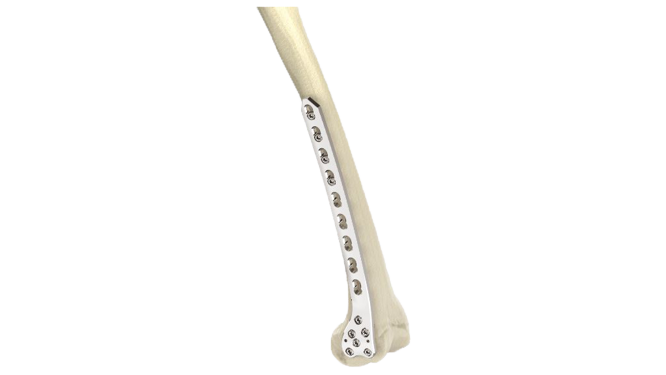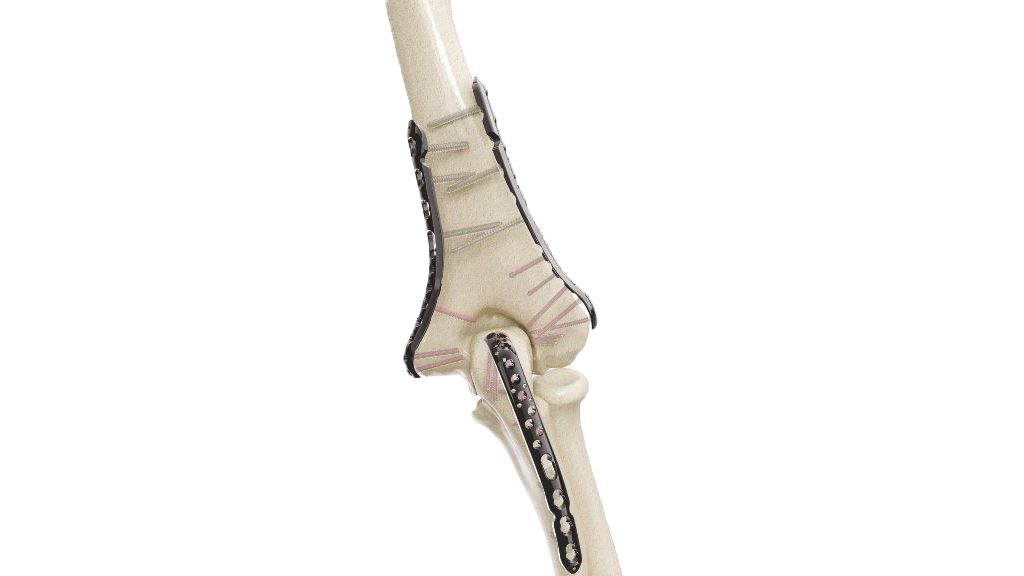Compact Hand Plates - ASLP 2.4 T Adaption Plate
Product Overview
The ASLP 2.4 mm T Adaption Plate is a cutting-edge orthopedic implant designed to provide versatile solutions for hand and finger surgical procedures. Crafted with precision, this implant offers exceptional adaptability, ensuring a secure fit for various surgical needs, from fracture fixation to joint fusion. Its low-profile design reduces discomfort, and its polished surface minimizes tissue irritation during recovery. Surgeons worldwide trust this implant to enhance the quality of care for patients seeking hand and finger surgical interventions.
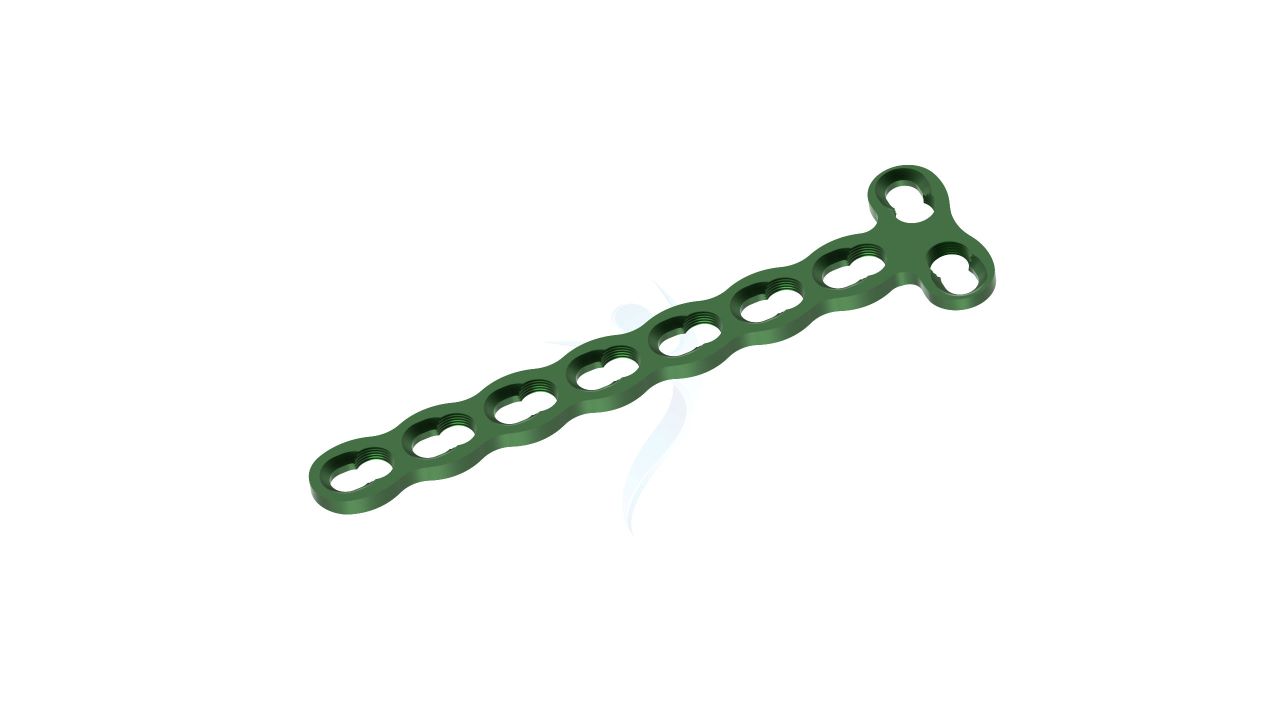
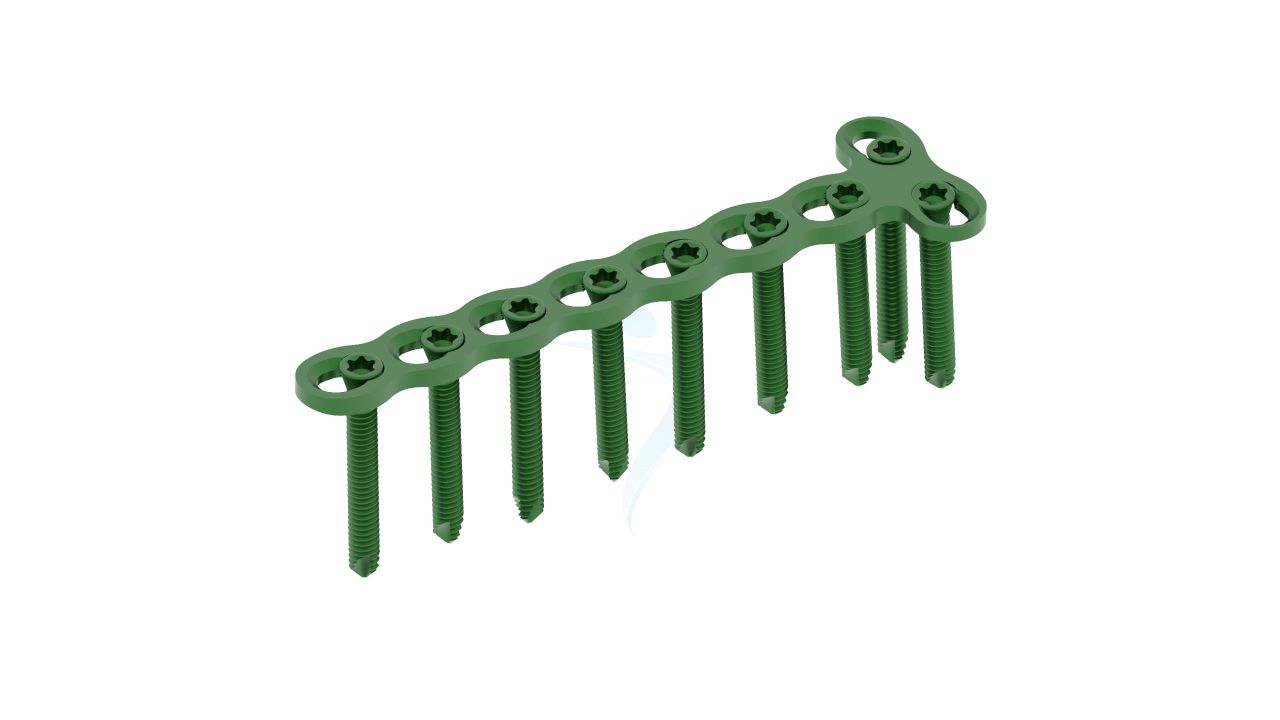
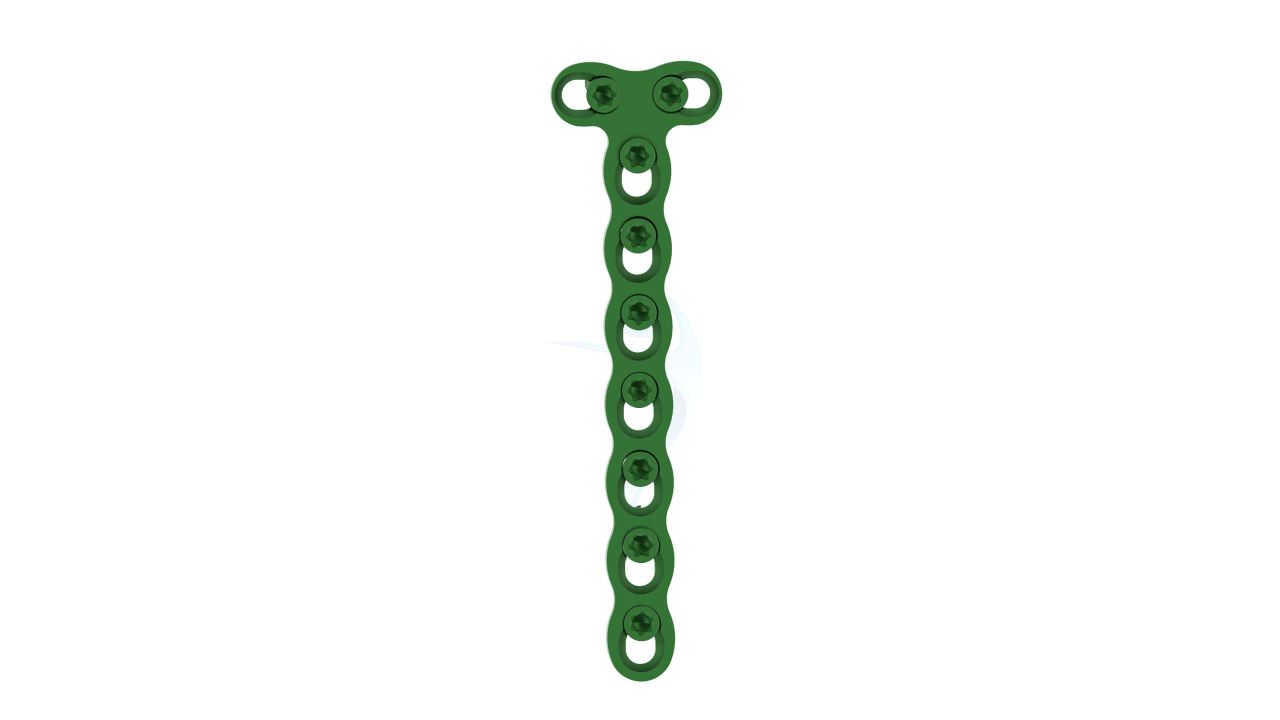
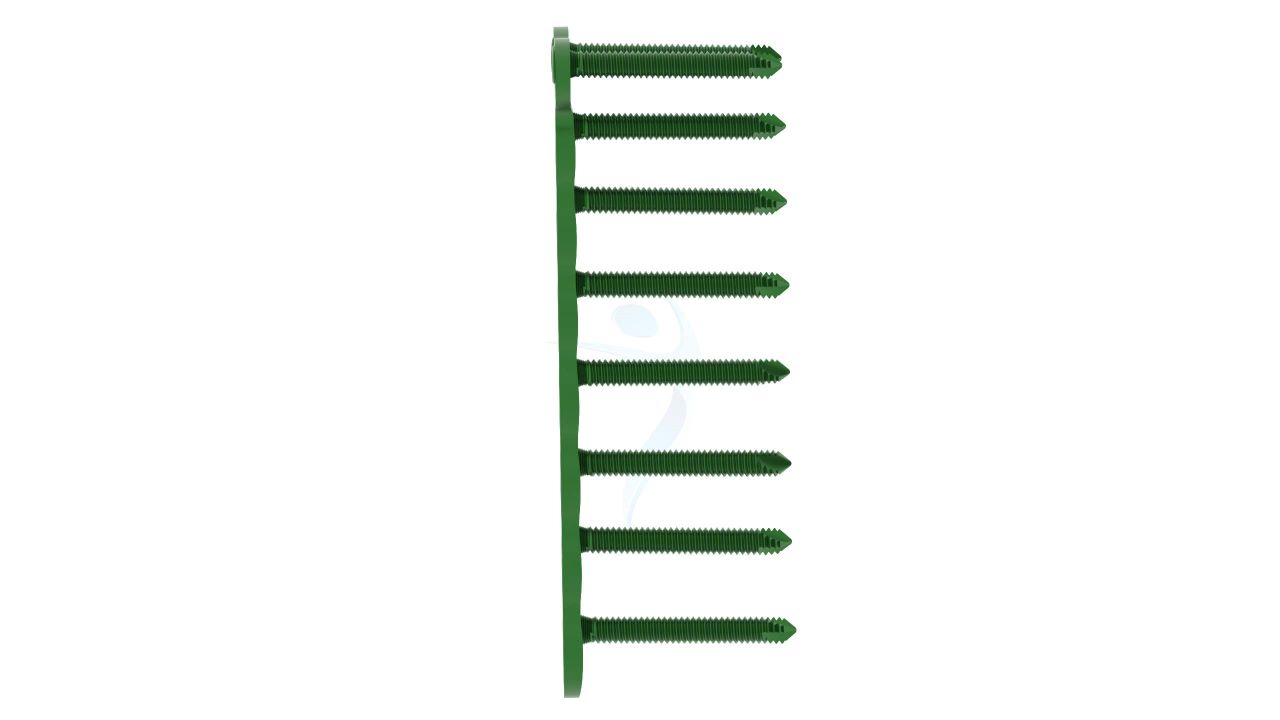
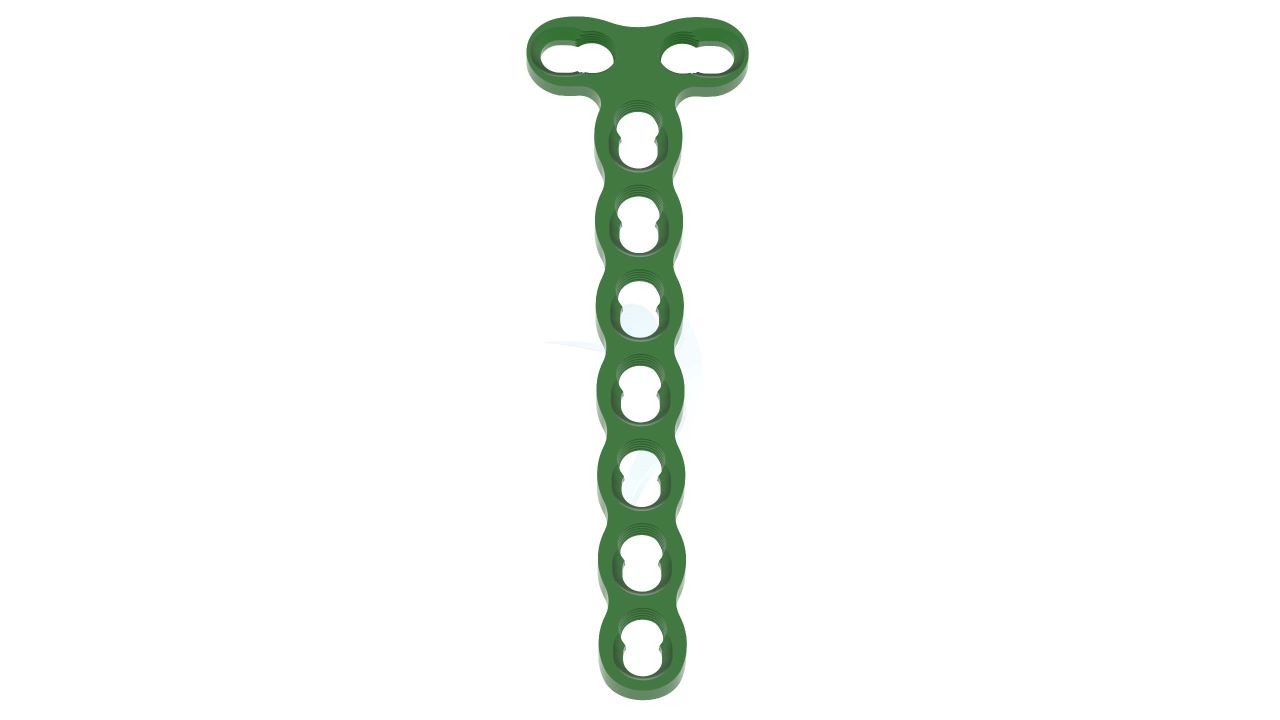


Product Uses
- Fracture Fixation : Used to stabilize and support fractured bones in the hand and fingers, facilitating proper healing.
- Malunion Correction : Employed to correct malunions, where bones have healed in improper alignment.
- Arthrodesis (Joint Fusion) : Applied to immobilize joints and promote fusion, often used in cases of severe arthritis or joint instability.
- Bone Graft Fixation : Secures bone grafts or bone fragments during reconstructive surgeries.
- Osteotomies : Assists in bone cutting and repositioning procedures to correct alignment issues and improve joint function.
Product Specification
- Plate Hole Diameter :Designed to accommodate 2.4 mm orthopedic screws.
- Plate Hole Spacing : Adjustable hole spacing for versatile surgical applications.
- Design : T-shaped for adaptability, suitable for various hand and finger surgical procedures.
- Surface Finish :Smooth and polished for reduced tissue irritation and enhanced post-surgery healing
- Compatibility : Compatible with a range of orthopedic screws and instruments commonly used in hand and finger surgeries
- Manufacturer :Produced by reputable medical implant manufacturers, compliant with stringent quality and regulatory standards.
Compact Hand Plates - ASLP 2.4 mm T Adaption Plate Sizes
Comprehensive Guide for Compact Hand Plates ASLP 2.4 T Adaption Plate
- Patient Evaluation : Conduct a thorough evaluation of the patient's medical history, hand condition, and imaging studies (X-rays, CT scans, etc.) to determine the need for surgery and the suitability of the T Adaption Plate.
- Informed Consent : Obtain informed consent from the patient, explaining the surgical procedure, potential risks, and expected outcomes.
- Anesthesia : Discuss anesthesia options with the patient and anesthesiologist. Local, regional, or general anesthesia may be used based on the specific surgery and patient's needs.
- Surgical Team Preparation : Ensure that the surgical team, including the surgeon, nurses, and technicians, is prepared with the necessary instruments and equipment.
- Surgical Planning : Plan the surgical approach, incision location, and necessary tools and equipment.
- Incision : Make an appropriate incision over the affected area of the hand or finger, exposing the fractured or affected bone.
- Fracture Reduction : If applicable, carefully realign the fractured bone fragments to their correct position.
- Incision and Soft Tissue Dissection :Make a precise incision at the predetermined surgical site, exposing the bone or joint that requires treatment.
- Stability Check : Verify the stability and alignment of the bone or joint fixation with the plate in place. Make any necessary adjustments.
- Plate Placement : Securely position the 2.4 mm Adaption Compact Hand Plate (ASLP) over the bone or joint, ensuring it conforms to the anatomical contours.
- Wound Closure : Close the incision meticulously by suturing the skin and underlying tissues, if required. Ensure proper alignment of wound edges for optimal healing.
- Dressing and Immobilization : Apply sterile dressings over the incision site and immobilize the treated hand or finger using an appropriate splint, cast, or immobilization method as determined by the surgeon.
- Recovery and Post-Operative Care :Transfer the patient to the recovery area and provide appropriate post-operative care, including pain management, monitoring, and follow-up instructions.
- Follow-Up Appointments : Schedule follow-up appointments with the surgeon to assess the patient's progress, monitor wound healing, and address any post-operative concerns.
- Wound Care and Activity Restrictions :Instruct the patient or their caregiver on proper wound care, dressing changes, hygiene, and activity restrictions to support the healing process.


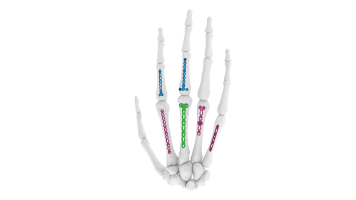
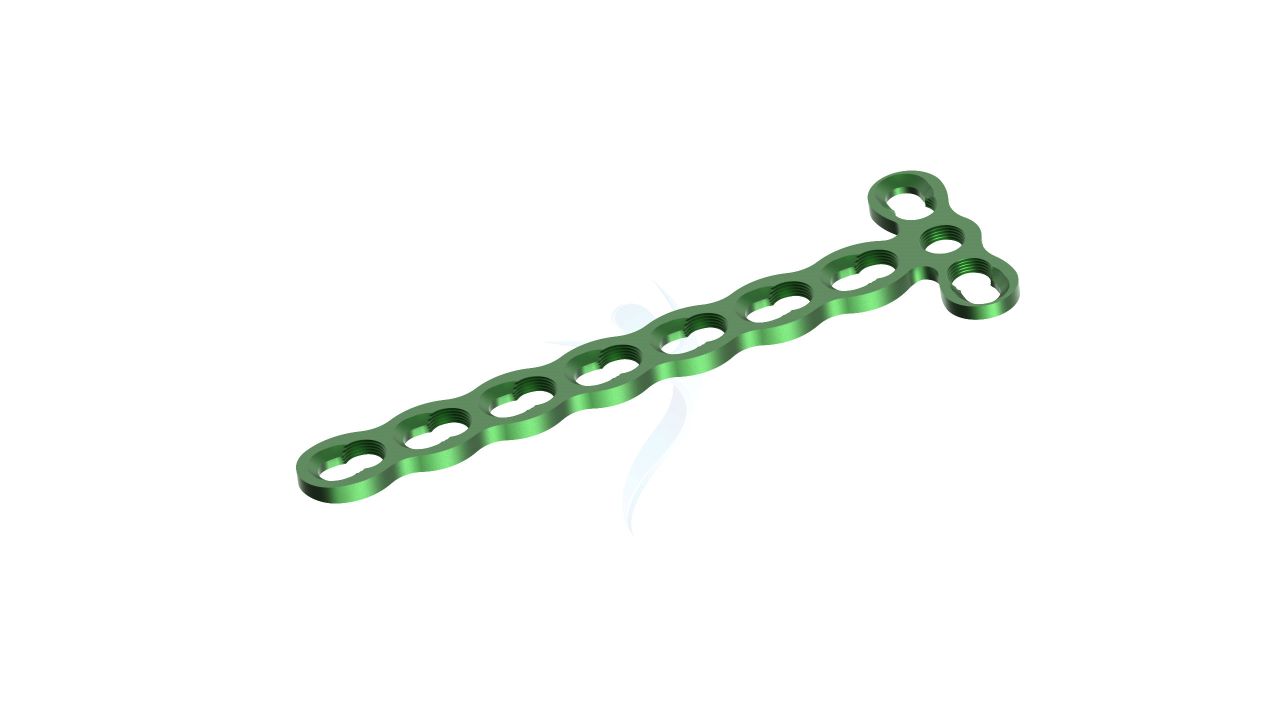
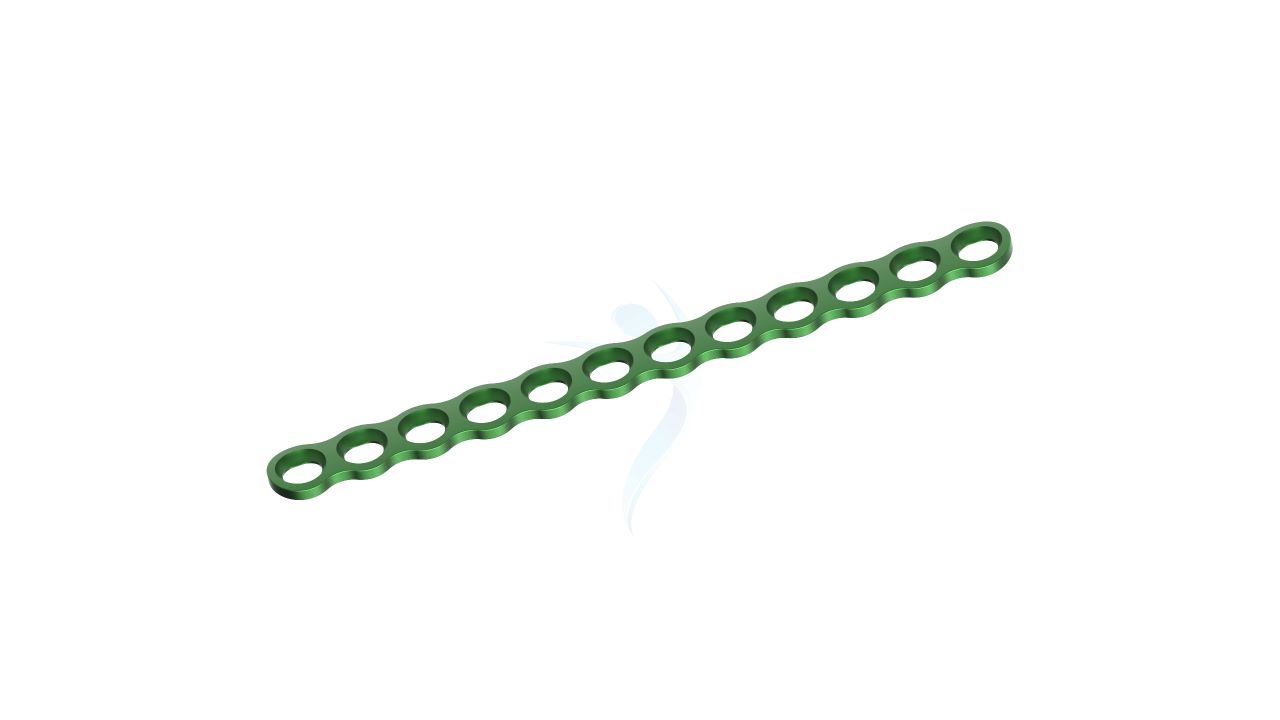
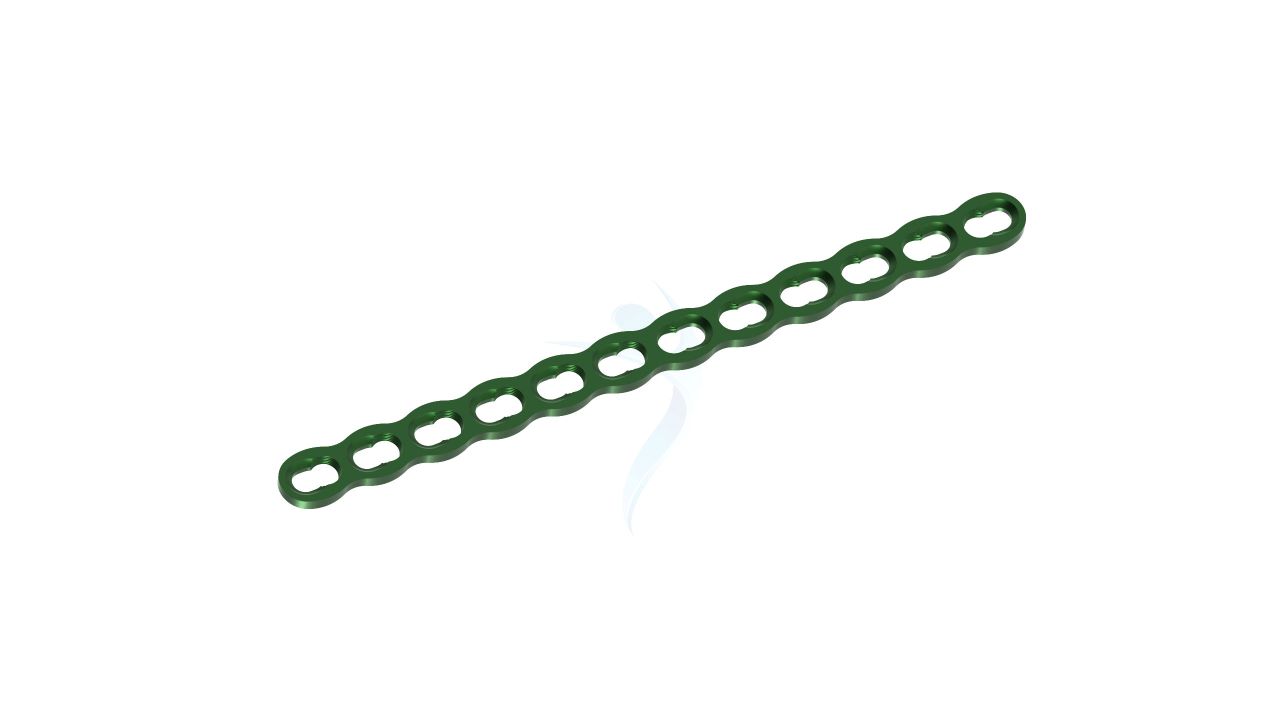
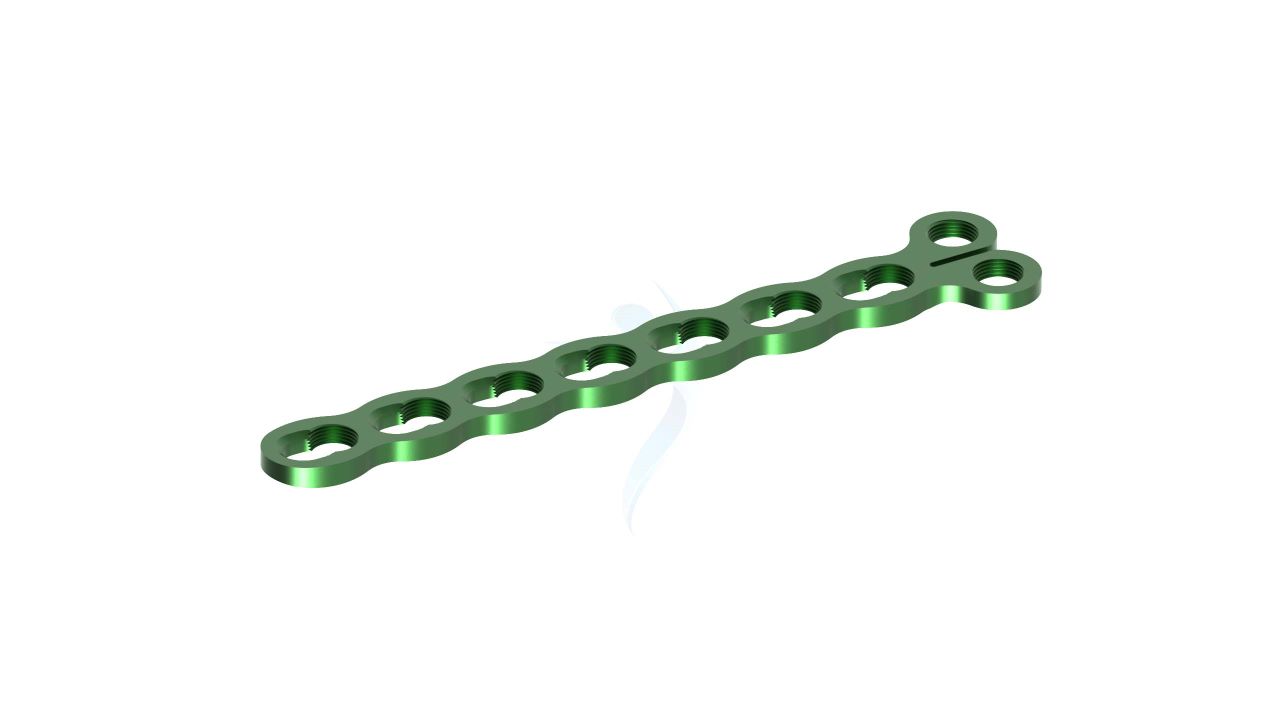

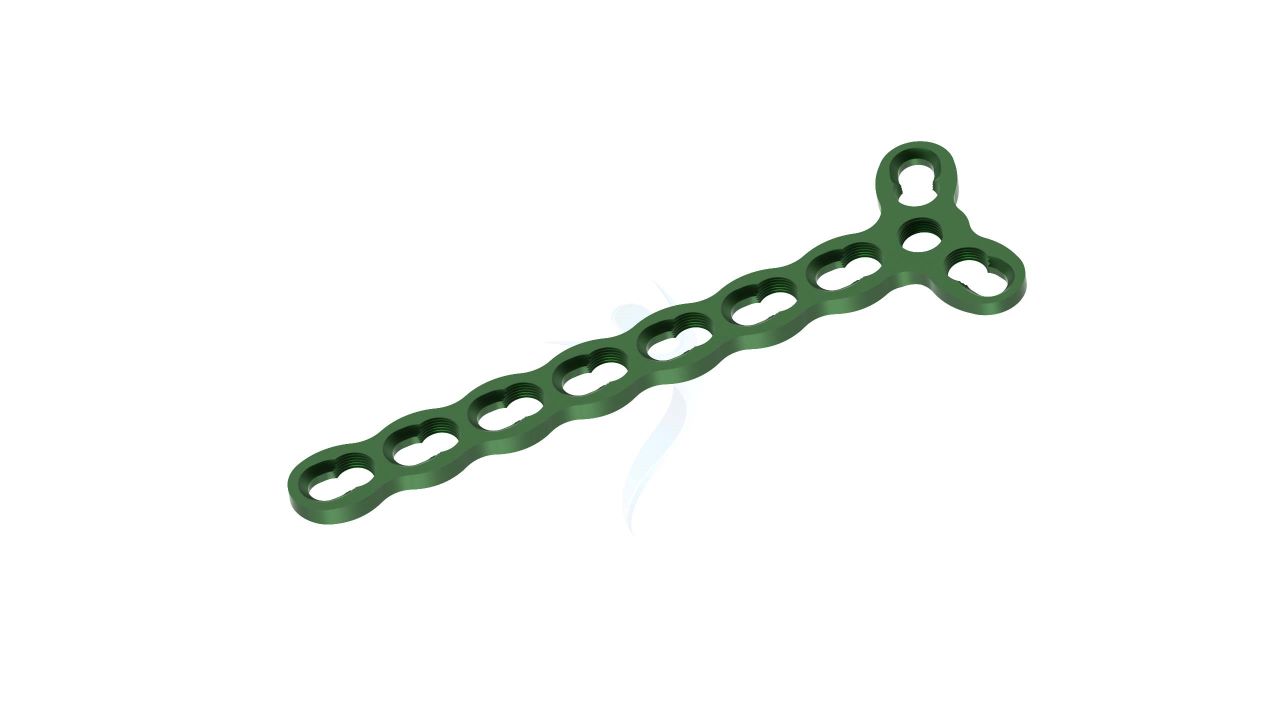

.png)

